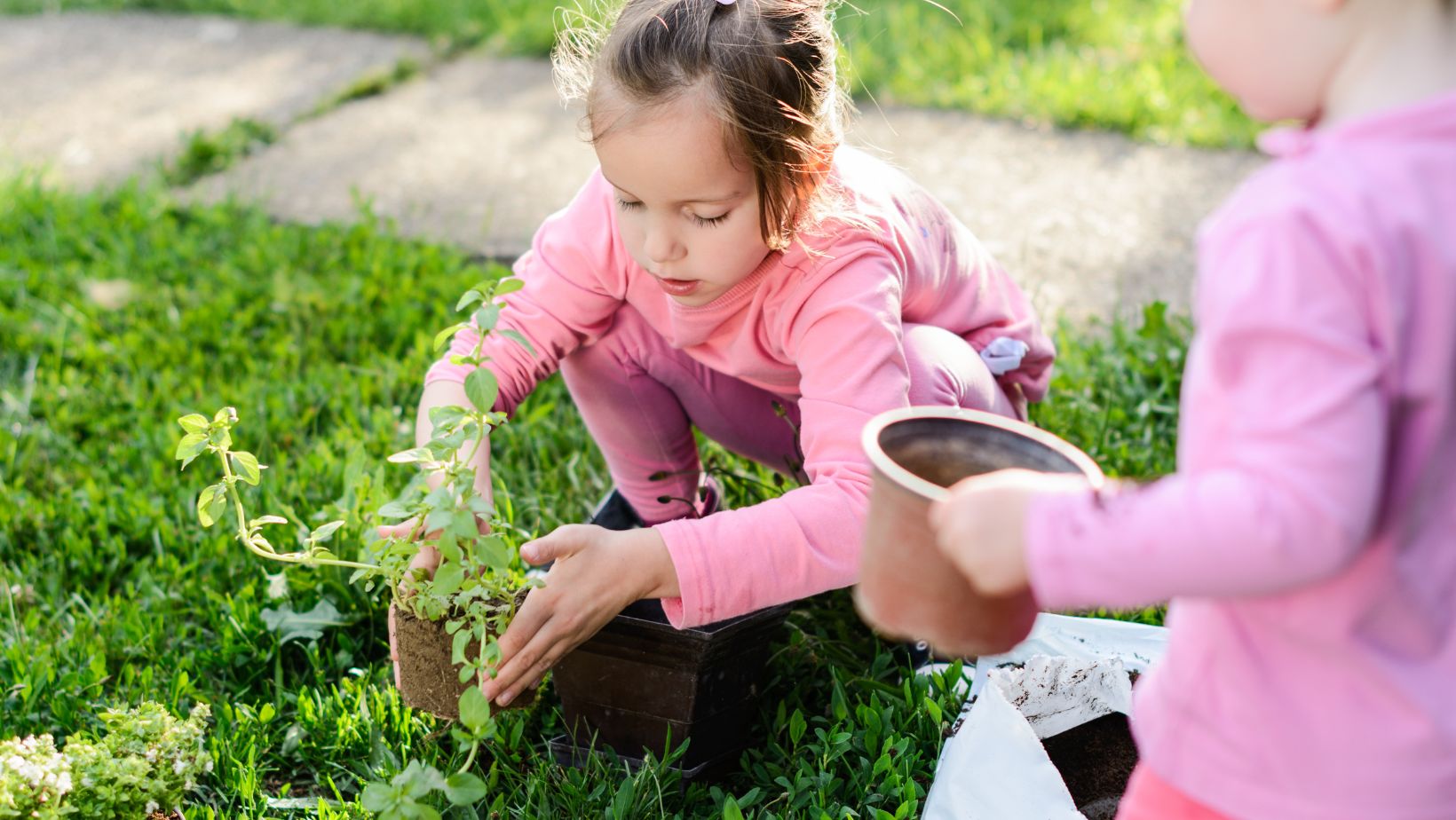“
Traveling with toddlers can feel like a daunting task, but it also opens up a world of adventure and discovery. Finding the right destinations that cater to little ones can make all the difference, ensuring a memorable experience for the whole family. From sandy beaches to enchanting theme parks, there are countless places designed to delight young explorers.
Parents often seek destinations that balance fun and safety while providing ample opportunities for play and learning. With the right planning, families can create lasting memories in kid-friendly environments that spark curiosity and joy. This guide explores the best travel spots that cater to toddlers, making family vacations enjoyable and stress-free.
Key Takeaways
-
Choose Family-Friendly Destinations: Opt for travel spots like Disney World, San Diego, and Gatlinburg that cater to toddlers with engaging attractions and safety features.
-
Embrace Natural Adventures: National parks provide perfect settings for exploration, with accessible trails and family-friendly activities that allow toddlers to connect with nature.
-
Enjoy Beach Activities: Select beaches with calm waters and sandy shores, where toddlers can safely participate in fun activities like sandcastle building and shell collecting.
-
Utilize Amusement Parks: Look for amusement parks that offer age-appropriate rides and attractions specifically designed for younger visitors to ensure a safe and joyous experience.
-
Plan for Learning Experiences: Cultural and historical destinations, such as interactive museums and kid-friendly tours, can provide enriching experiences while keeping toddlers engaged.
-
Preparation is Key: Always pack essentials, plan for breaks, and choose less crowded days to ensure stress-free outings and enjoyable travel experiences for families with toddlers.
Top Travel Destinations With Toddlers
Traveling with toddlers brings unique experiences. Selecting the right destination ensures enjoyment for everyone. Here are some top choices:
1. Disney World, Florida
Disney World provides an immersive experience for toddlers. Character meet-and-greets, gentle rides, and interactive play areas capture young imaginations. Services, like stroller rentals and themed dining, cater to family needs.
2. San Diego, California
San Diego features beaches and attractions perfect for toddlers. Balboa Park’s playgrounds and the San Diego Zoo offer engaging experiences. Local beaches boast gentle waves, enabling safe play and exploration.
3. Gatlinburg, Tennessee
Gatlinburg combines nature with family-friendly activities. The Great Smoky Mountains National Park offers short, easy hiking trails. Attractions, like the Ripley’s Aquarium, entertain and educate young children.
4. Legoland, California
Legoland focuses on hands-on experiences for toddlers. The park includes interactive play areas and rides suitable for younger visitors. The Duplo Village area specifically designed for toddlers encourages imaginative play.
5. New Orleans, Louisiana
New Orleans provides rich culture and family-friendly activities. The Louisiana Children’s Museum features interactive exhibits that spark curiosity. Direct access to parks and street performers keeps toddlers engaged.
6. Charleston, South Carolina
Charleston offers charm and historical sites. Waterfront parks provide ample space for play. Family-friendly tours help introduce toddlers to history in a fun, engaging manner.
7. Washington, D.C.
Washington, D.C. blends education with fun. The National Mall houses several museums with free admission. The Smithsonian’s National Air and Space Museum captivates young explorers with engaging exhibits.
8. Pigeon Forge, Tennessee
Pigeon Forge presents many family attractions. The Titanic Museum and Dollywood offer engaging shows and activities. Numerous outdoor spaces allow for family picnics and playtime with scenic backdrops.
These destinations offer suitable environments for toddlers. Each location supports fun, safety, and educational experiences. Parents can create lasting memories through these engaging travel choices.
Family-Friendly Beaches
Family-friendly beaches offer a perfect backdrop for fun-filled days with toddlers. These sandy spots combine safety and accessibility, ensuring parents and little ones can enjoy their time together.
Best Coastal Spots
- Outer Banks, North Carolina: This location features calm waters and expansive sand dunes, providing ample space for families to explore. Numerous beach rentals cater specifically to families, offering amenities like cribs and high chairs.
- Maui, Hawaii: Known for its gentle waves, Maui boasts beaches like Baby Beach in Lahaina, ideal for toddlers. Families can find child-friendly resorts with pools and kid’s clubs dedicated to young children.
- San Diego, California: With beaches such as La Jolla Shores, parents find soft sand and picturesque views. Local parks adjacent to the beach offer playgrounds and picnic areas for added entertainment.
- Florida Keys, Florida: The shallow waters of Sombrero Beach in Marathon ensure safe splashes for small children. Beach access is easy, and many accommodations offer family-friendly services and activities.
- Cape May, New Jersey: This family-oriented destination presents a quaint atmosphere with a wide beach front. Families can enjoy boardwalk amusements and nearby parks, providing diverse options for entertainment.
- Sandcastle Building: Parents encourage creativity through sandcastle competitions. Using buckets and shovels, toddlers can develop motor skills while enjoying imaginative play.
- Shell Collecting: Walking along the shore, little ones can hunt for shells and colorful stones. This activity fosters exploration, learning about nature and its treasures.
- Beach Games: Parents can organize simple games, such as beach ball tosses or frisbee. These games are easy to understand and encourage physical activity.
- Picnics: Families can set up convenient picnic spots. Bringing along easy-to-eat snacks and drinks keeps toddlers fueled for more fun at the beach.
- Wading: Supervised wading provides toddlers with safe water experiences. Shallow areas allow kids to play and cool off without the risks of deep water.
These activities enhance the beach experience for families, making each visit enjoyable and memorable.
Amusement Parks and Fun Zones
Amusement parks and fun zones offer countless opportunities for toddlers to engage in play and exploration. These destinations provide a mix of age-appropriate attractions, ensuring that young children have safe and enjoyable experiences.
Age-Appropriate Rides
Age-appropriate rides enhance the amusement park experience for toddlers. Families can find rides specifically designed for younger children, including gentle carousels, mini roller coasters, and soft play areas. Examples of toddler-friendly attractions include the following:
- Disney’s Magic Kingdom: Features the “”Dumbo the Flying Elephant”” ride and “”It’s a Small World,”” both perfect for little ones.
- Legoland California: Offers rides such as “”Duplo Train,”” tailored for younger visitors with slower speeds and shorter heights.
- Sesame Place in Pennsylvania: Designed for toddlers, with water attractions and the “”Elmo’s Flying Fish”” ride, ensuring safe thrills.
These rides promote family fun while ensuring safety and comfort for toddlers.
Tips for Navigating Crowds
Navigating crowds at amusement parks and fun zones can present challenges for families with toddlers. Implementing simple strategies ensures enjoyable experiences. Key tips include:
- Arrive Early: Arriving before park opening allows families to experience popular rides with shorter wait times.
- Utilize Stroller Services: Bringing or renting a stroller provides comfort for tired toddlers and eases movement through crowds.
- Choose Off-Peak Days: Visiting on weekdays or outside peak seasons minimizes crowd size, creating a more relaxed atmosphere.
- Plan Breaks: Scheduling breaks for snacks or quiet time helps prevent overstimulation and keeps toddlers content.
By applying these tips, families can enhance their amusement park experience, making it enjoyable for toddlers and parents alike.
Nature Escapes for Families
Nature offers countless opportunities for families to bond and explore. Here are safe and enjoyable destinations and tips tailored for families traveling with toddlers.
National Parks to Explore
National parks provide stunning landscapes and kid-friendly activities. Notable parks include:
- Yellowstone National Park: Home to geysers and hot springs, it offers accessible trails suitable for strollers and short hikes to sights like Old Faithful.
- Yosemite National Park: Features flat, paved trails such as the Mirror Lake Trail, perfect for family strolls and discovering nature.
- Acadia National Park: Boasts coastal views and easy biking trails like the Carriage Roads, allowing families to explore at a comfortable pace.
- Great Smoky Mountains National Park: Provides easy trails like the Laurel Falls Trail, which leads to a beautiful waterfall, ideal for family photo opportunities.
Safety and Preparation Tips
Traveling with toddlers in nature requires careful planning. Here are essential safety and preparation tips:
- Pack Essentials: Include snacks, water, sunscreen, hats, and first-aid supplies to keep everyone comfortable during outdoor adventures.
- Choose Easy Trails: Select well-maintained trails with minimal elevation changes, making them manageable for both toddlers and parents.
- Check Weather Conditions: Monitor forecasts to avoid severe weather, ensuring a pleasant experience in the outdoors.
- Establish Rules: Set clear guidelines for exploring, making sure toddlers understand the importance of staying close and respecting wildlife.
- Utilize Child Carriers: When trails are challenging, consider using child carriers or backpacks specifically designed for toddlers, ensuring their comfort and safety.
These nature escapes and practical tips enhance family travel experiences, making adventures enjoyable and secure for young children.
Cultural and Historical Destinations
Cultural and historical destinations provide enriching experiences for families traveling with toddlers. Engaging activities and accessible environments enhance learning while ensuring safety and enjoyment.
Interactive Museums for Kids
Interactive museums create hands-on learning opportunities for toddlers. Museums like the Children’s Museum of Indianapolis feature play-based exhibits, encouraging exploration and creativity. The Brooklyn Children’s Museum offers sensory play areas and outdoor exhibits, perfect for young visitors. The Exploratorium in San Francisco promotes scientific discovery with its engaging installations. These child-centered settings focus on learning through play, making museum visits enjoyable for kids and their families.
Kid-Friendly Tours
Kid-friendly tours cater to young children’s attention spans and interests. Many cities offer guided tours designed for families, such as the Philadelphia Trolley Works, which provides a comfortable ride and highlights historical landmarks in an engaging manner. In Washington, D.C., the National Mall features accessible walking tours that accommodate strollers and offer activities, such as scavenger hunts, to keep toddlers engaged. Additionally, Amsterdam’s canal tours present unique sightseeing experiences from the water, captivating young imaginations while allowing parents to relax. These tours combine cultural experiences with family-friendly elements, enhancing the travel experience for everyone.
World of Adventure and Discovery
Traveling with toddlers opens up a world of adventure and discovery. By choosing destinations that cater to young children, families can create unforgettable memories while ensuring safety and enjoyment. From sandy beaches to vibrant amusement parks and enriching cultural experiences, there’s no shortage of options.
Embracing the joys of travel with little ones fosters curiosity and bonding. Parents can take comfort in knowing that with thoughtful planning, every trip can be a delightful journey filled with laughter and exploration. With the right destinations in mind, families can embark on travels that inspire wonder and create lasting connections.”

 Based on my extensive testing of outdoor artificial plants, I’ve identified several varieties that offer exceptional durability and realistic appearance for exterior spaces. These selections combine weather resistance with aesthetic appeal to create lasting outdoor displays.
Based on my extensive testing of outdoor artificial plants, I’ve identified several varieties that offer exceptional durability and realistic appearance for exterior spaces. These selections combine weather resistance with aesthetic appeal to create lasting outdoor displays.